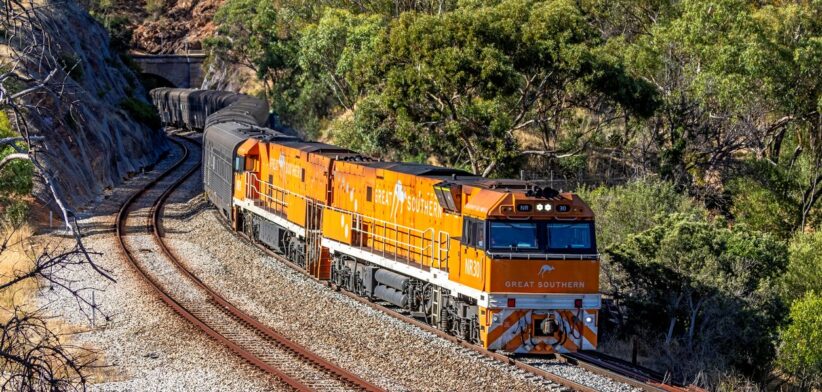Half of Australia’s diesel-powered railway rollingstock is due to be replaced before 2050, with no plan for environmentally-friendly replacements.
The Australasian Railway Association (ARA) is warning Australia needs to develop a national strategy to decarbonise rail operations or risk losing a critical procurement window to phase out diesel trains and meet net zero targets.
In a new report, the peak body for the rail sector in Australia and New Zealand, outlined a set of recommendations to support adoption of low and zero emission technologies to address traction emissions related to diesel-powered locomotives.
ARA CEO Caroline Wilkie said rail had an important role to play in helping to decarbonise transport given its ability to move people and freight in a less emissions-intensive way compared with road transport.
“Approximately half of Australia’s diesel-powered rollingstock are due to be replaced from 2030-2050, but there are not yet clear solutions to support the transition to low and zero emissions technologies,’ Ms Wilkie said.
“The rollingstock purchased during this period will have a life well beyond 2050 and must be fit for purpose as part of our net zero future.”
She said urgent, coordinated action to boost research and pilot projects, plan enabling infrastructure, confirm renewable energy and fuel supply, and build skills and supply chain capability was needed to maximise the benefits that could be realised in this procurement window.
Ms Wilkie said traction energy accounts for about 90 percent of rail’s emissions.
“While passenger rail services in metropolitan areas are generally electrified, diesel-powered locomotives continue to be used for regional passenger rail and remain the dominant motive power for rail freight and heavy haul in Australia,” she said.
Ms Wilkie said the report found efficient and timely decarbonisation of rollingstock would be dependent on supply chain capability and available workforce and skills.
Study Lead Mia Barnard said collaborative action was needed to support the adoption of new technologies.
“Although most low and zero emission rollingstock technologies are generally suitable within the broad category of rail tasks, the real-world feasibility of such technologies depends on the specific use cases experienced across our diverse rail network,” Ms Barnard said.
She said in Australia, rollingstock was not anticipated to transition at the same pace as some other sectors of the economy due to the lack of maturity of suitable technology and the unique challenges, such as long asset lifecycles, different gauges, operating conditions, regulations.
The report said achieving early emissions reductions, along with deep decarbonisation of rollingstock in the longer term, would require an operationally-optimised mix of the technologies, such as:
- Improved energy efficiency and productivity solutions: Energy efficiency and productivity improvements remain instrumental in contributing to emissions reductions in the near term and will continue to be important to ensure the efficiency and cost-effectiveness of rail.
- Transitional solutions: Biofuels, renewable diesel and the use of bi-mode locomotives represent transitional solutions that can be increasingly deployed. This includes diesel-electric or battery-electric hybrid locomotives able to run on overhead power on electrified networks where available.
- Alternative propulsion solutions: Electrification, along with battery, hydrogen and other zero emission alternative propulsion technologies, are emerging as a long-term solution, both internationally and within Australia.








